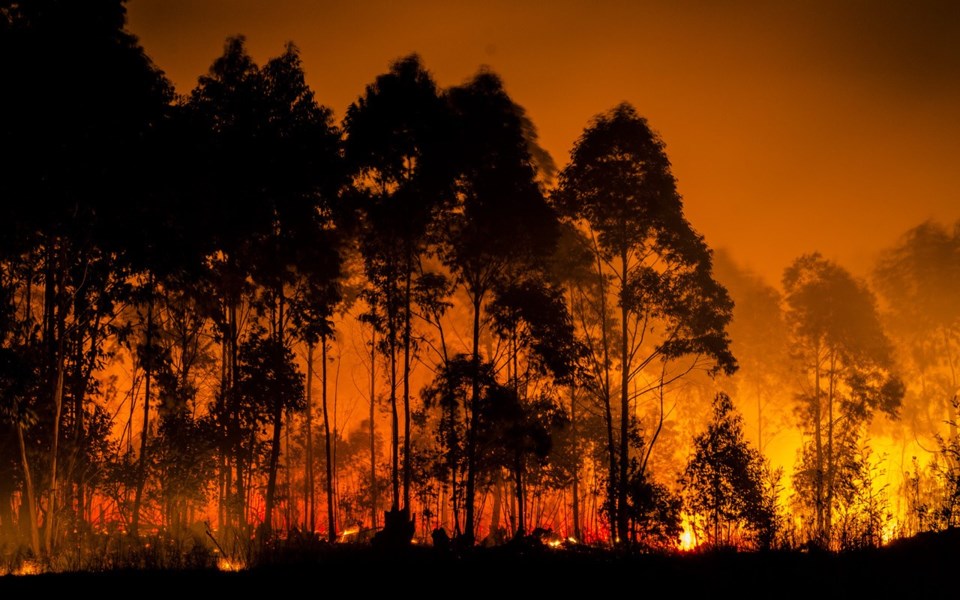SOUTH LAKE TAHOE, Calif.—It would seem that having an evacuation plan in place would be a good thing in mountain communities where wildfires always pose an element of risk.
But in the Lake Tahoe Basin of California and Nevada, officials for years resisted creating widespread evacuation plans. The Tahoe Daily Tribune explained that some feared concrete plans could put people in danger, rather than taking them away from it. This is because of the few exits from the basin but also the unpredictable nature of wildfire.
Plus, with many different governmental agencies around the lake, creating a basin-wide evacuation plan required collaboration and community and communication across jurisdictional lines, which further complicated the work.
Tahoe was far from alone. The Daily News pointed to a survey by USA Today Network-California earlier this year that only 22 per cent of communities at high risk from wildfire had a robust, publicly available evacuation plan. Like those in Tahoe, some officials in California argued that such plans could be more harmful than helpful.
Then came the Camp Fire last November. It killed 86 people in and around the community of Paradise, Calif., in the foothills of the Sierra Nevada northeast of Sacramento. That community had an evacuation plan.
In the aftermath of that fire, residents in South Lake Tahoe pushed their officials to act. The Daily Tribune reported that Jeff Meston, then the fire chief in Tahoe, saw Tahoe as being at even greater risk than Paradise. "We have many, many similarities, and some dis-similarities that are disadvantageous to us."
Now, South Lake Tahoe is close to having an evacuation map. No word on the plans for a basin-wide plan.
New reasons for rising real estate prices
JACKSON, Wyo.—Real estate in Jackson Hole has always been an attractive proposition because of Wyoming's tax laws. There is no state income tax, making it a good place to declare as the permanent home of people of great wealth from elsewhere.
Real estate agent Greg Prugh also pointed out other reasons to explain rapidly escalating prices. More real estate is also being sold over the internet, in which the sellers and local real estate people never see the buyers, he told the Jackson Hole News&Guide. And real estate has become even more of a global market.
Real estate sales were down in the first six months of the year in Teton County, but prices rose briskly. A house that sold five years ago for US$1.7 million in Melody Ranch, which in the 1990s was developed as an enclave for Jackson's middle class, was recently resold for US$3.75 million.
A brisk rise in rental prices
CANMORE, Alta.—Housing rentals have been rising at a brisk rate in Canmore, the gateway community to Banff National Park. In the span of just four years, costs have increased 71 per cent, according to a recent study. No word on how much incomes have grown during the same time span.
A one-bedroom rental this year fetches $1,483, compared to $866 in 2016. Even then, according to a study, 29 per cent of renters in Canmore were paying 30 per cent or more of their pre-tax income on rent. The Canadian Rental Housing Index holds that paying 30 per cent to 49 per cent is unaffordable, and 50 per cent or more is severely unaffordable, pointed out the Rocky Mountain Outlook.
"I think everyone who deals in housing knows that low-income single adults are very underserved, the people with disabilities are underserved, the number of people who are paying (more than 30 per cent of their income) is outrageous compared to the rest of the province and the rest of the country," said Ian Wilson, the chief administrative officer for the Bow Valley Regional Housing.
Why did this wolf decide to sniff around the tent?
LAKE LOUISE, Alta.—A wolf was killed near a campground in Banff National Park recently after it bit a camper.
Parks officials said the man heard the wolf sniffing and pawing around the tent, and then it pushed on the fabric of the tent. Thinking it was a bear, the camper tried to scare it away. As he did so, the wolf grabbed his arm and tore the tent open. The man suffered minor injuries in the scuffle before the wolf ran off. Also in the tent were three of the victim's family members.
Parks Canada told the Rocky Mountain Outlook no significant wildlife attractants or food were within or near the tent. What drew the wolf? Such cases seem to be so rare in North America that nobody could put together a hypothesis.




